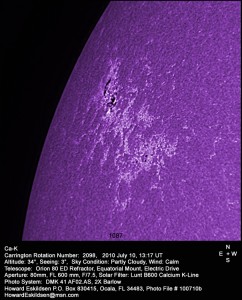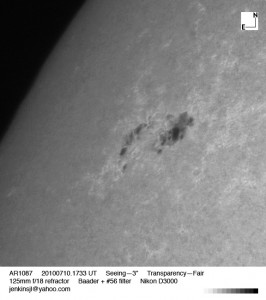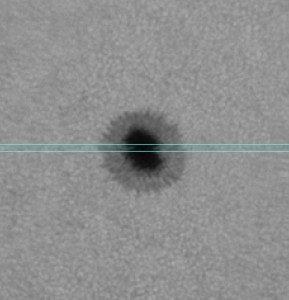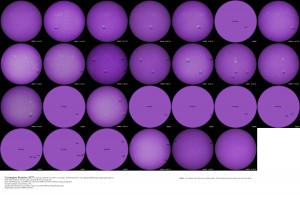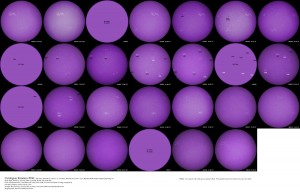February 11, 2010
NASA successfully launches a new eye on the Sun
Excellent News, the sun will never look the same again.
Kim
Feb. 11, 2010
Dwayne C. Brown
Headquarters, Washington
202-358-1726
dwayne.c.brown@nasa.gov
Don Savage
Goddard Space Flight Center, Greenbelt, Md.
301-286-8982
donald.savage@nasa.gov
RELEASE: 10-040
NASA SUCCESSFULLY LAUNCHES A NEW EYE ON THE SUN
CAPE CANAVERAL, Fla. — NASA’s Solar Dynamics Observatory, or SDO,
lifted off Thursday from Cape Canaveral Air Force Station’s Launch
Complex 41 on a first-of-a-kind mission to reveal the sun’s inner
workings in unprecedented detail. The launch aboard an Atlas V rocket
occurred at 10:23 a.m. EST.
The most technologically advanced of NASA’s heliophysics spacecraft,
SDO will take images of the sun every 0.75 seconds and daily send
back about 1.5 terabytes of data to Earth — the equivalent of
streaming 380 full-length movies.
“This is going to be sensational,” said Richard R. Fisher, director of
the Heliophysics Division at NASA Headquarters in Washington. “SDO is
going to make a huge step forward in our understanding of the sun and
its effects on life and society.”
The sun’s dynamic processes affect everyone and everything on Earth.
SDO will explore activity on the sun that can disable satellites,
cause power grid failures, and disrupt GPS communications. SDO also
will provide a better understanding of the role the sun plays in
Earth’s atmospheric chemistry and climate.
SDO is the crown jewel in a fleet of NASA missions to study our sun.
The mission is the cornerstone of a NASA science program called
Living With A Star. This program will provide new understanding and
information concerning the sun and solar system that directly affect
Earth, its inhabitants and technology.
The SDO project is managed at NASA’s Goddard Space Flight Center in
Greenbelt, Md. NASA’s Launch Services Program at Kennedy Space Center
managed the payload integration and launch.
For launch coverage, briefing materials, and multimedia, visit:
http://www.nasa.gov/mission_pages/sdo/news/briefing-materials-20100209.html
For more information about the SDO mission, visit:
http://sdo.gsfc.nasa.gov
and
http://www.nasa.gov/sdo

